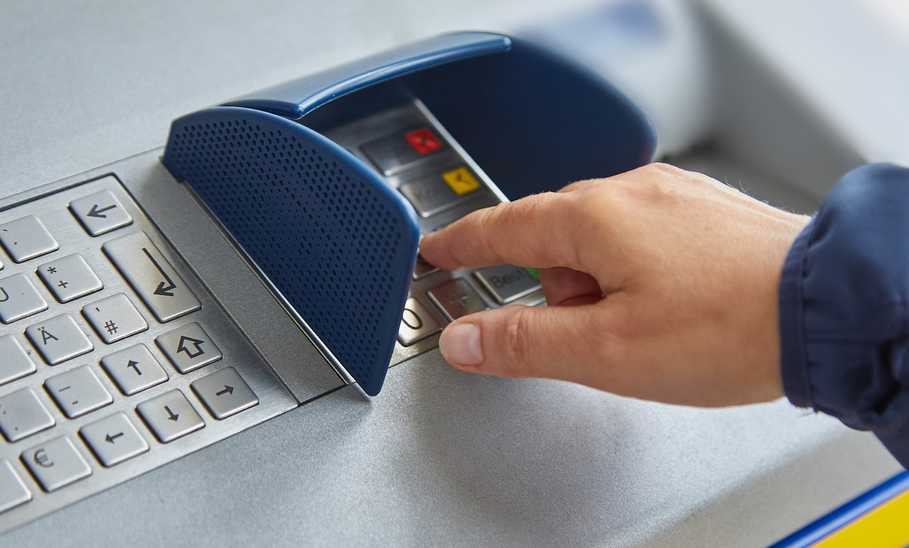Credit Card Skimmers: How to Spot And Avoid Them

Our evaluations and opinions are not influenced by our advertising relationships, but we may earn a commission from our partners’ links. This content is created by TIME Stamped, under TIME’s direction and produced in accordance with TIME’s editorial guidelines and overseen by TIME’s editorial staff. Learn more about it.
Credit card skimmers are devices that masquerade as an official point-of-sale terminal. They often fit over a merchant’s own credit card terminal and provide your data to a thief when you make a payment. They can also be false keypads or card-slot attachments. Whatever their form, you can avoid them almost every time with just a bit of diligence.
Invest in an identity protection with Identity Guard and get comprehensive notifications of data breaches and high-risk transactions while it monitors the dark web for you and be covered up to $1 million in identity theft insurance.
Fortunately, credit card skimmers are physical—often bulky—apparatuses that you should be able to spot. Though they may not be initially easy to distinguish, a few seconds of sleuthing is all it should take.
Some skimmers appear uncannily official, whether they’re a simple extension inserted into the credit card reader or an intricate shell that covers the entire terminal. However, upon closer inspection you’ll notice something does not look right. The stripe reader is at a funny angle. The buttons on the keypad are off-center or hard to push.
The easiest way to detect a credit card skimmer is to yank, pull, and tug. Before you put your card into a point-of-sale terminal, wiggle a few parts of the machine to see if anything is loose.
You should also compare the terminal you’re using with those nearby. For example, if you’re at a gas pump and notice that your card slot extends an inch or two farther than the neighboring pump, it’s best to keep your card sheathed.
As a rule of thumb, stay extra alert at gas stations (both at the pump and inside the convenience store) and at ATMs. Whenever you enter your personal identification number (PIN), cover the keypad with one hand so that any discreet cameras won’t catch your activity. Even if you’re in a reputable store, it’s possible for criminals to pop a skimmer onto a terminal. Worse yet, some proprietors may be in on the scam.
Some technology exists to help you avoid falling victim to skimmers. For example, Skim Reaper is a device that serves as a “test” credit card. Insert Skim Reaper into a credit card terminal before your actual credit card, and it will tell you if your card is being read more than once. If so, it’ll alert you that a skimmer is present. The practice takes as long as swiping a regular card.
As always, don’t let anyone touch your card unless absolutely necessary. There are scenarios, though, in which it can be virtually impossible to keep your card safe. At restaurants and fast food drive-throughs, for instance, a server or cashier can take your credit card and disappear from sight. How do you protect yourself in such a case?
One way is to invest in an identity protection membership. One example is Identity Guard. It sends comprehensive notifications of data breaches and high-risk transactions, and it monitors the dark web for you. You’ll also get $1 million in identity theft insurance.
A successfully skimmed credit card gives the thief a few options. They can:
Skimmers can be especially devastating in the case of debit cards because these cards don’t have the zero liability for fraud that credit cards provide. Zero liability means that victims of fraud will almost certainly not be responsible for purchases they didn’t make—if reported in a timely fashion. With a debit card, once the cash is moved out of your account, it’s likely gone for good.
Most credit and debit cards come with EMV chips that will foil the attempts of most skimmers. However, scam technology is catching up. There now exist devices that “shim” your credit card information instead of “skim.” It’s much smaller, making it extremely difficult to spot.
EMV chips are impossible to skim because the key that unlocks your payment continually changes. However, shimming involves capturing your payment information and duplicating it onto a magnetic stripe. Again, services such as Identity Guard can help to minimize the damage caused by a shimmer in the form of insurance and alerts.
If you’re in the habit of lightly jostling every point-of-sale terminal you use, there is very little chance you’ll fall victim to a credit card skimmer. They’re often an attachment that feels cheap relative to the sturdy build of an official credit card terminal. At gas stations and ATMs, be extra diligent to inspect for both a false chassis and rogue cameras trying to capture your sensitive information.
Skimmers can take the form of fake keypads on a credit card terminal or an accessory disguised as a credit-card slot. Some thieves use a camera that watches your activity as you interact with the point-of-sale terminal.
Credit card skimmers attach to a credit card machine and read your card at the same time as the merchant. Once your information is captured, the thief may either retrieve the physical device or have your data sent to them via bluetooth.
First, examine the lockable door on which the credit-card slot is located. It should be closed, and it often also has security tape positioned across the seal. If that tape is ripped, or if the door is ajar, move on.
Also, inspect (with your eyes and hands) the actual credit-card slot and PIN pad. Bulkiness is a sure sign that something fishy is going on. If anything detaches, or if the buttons are hard to press, move on. Compare your machine to surrounding gas pump credit-card slots to see if there’s a difference in appearance.
The information presented here is created by TIME Stamped and overseen by TIME editorial staff. To learn more, see our About Us page.



